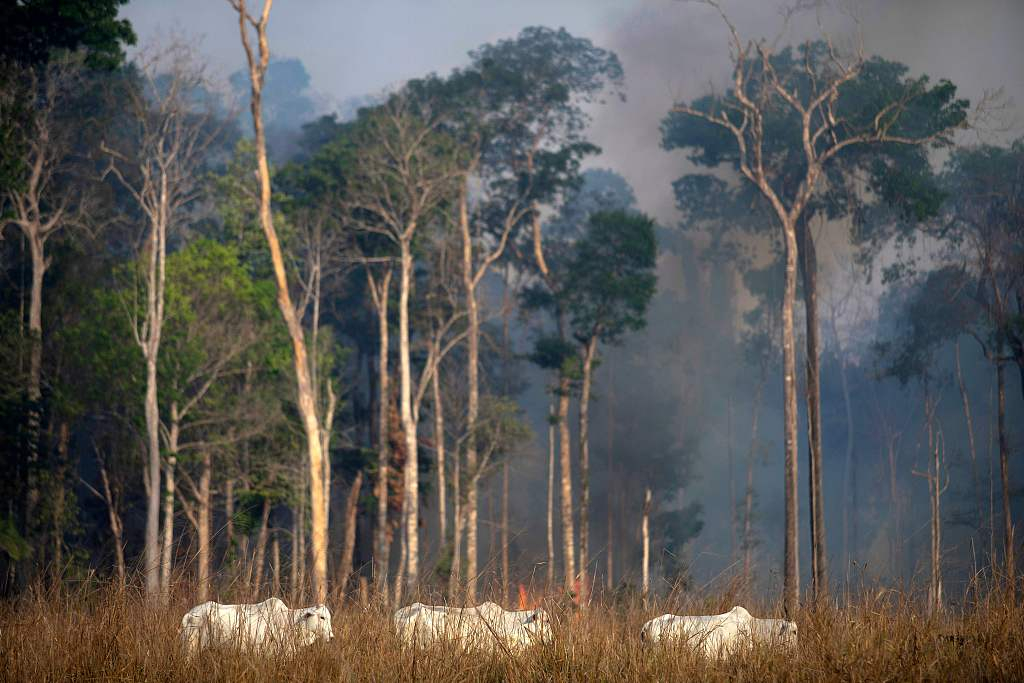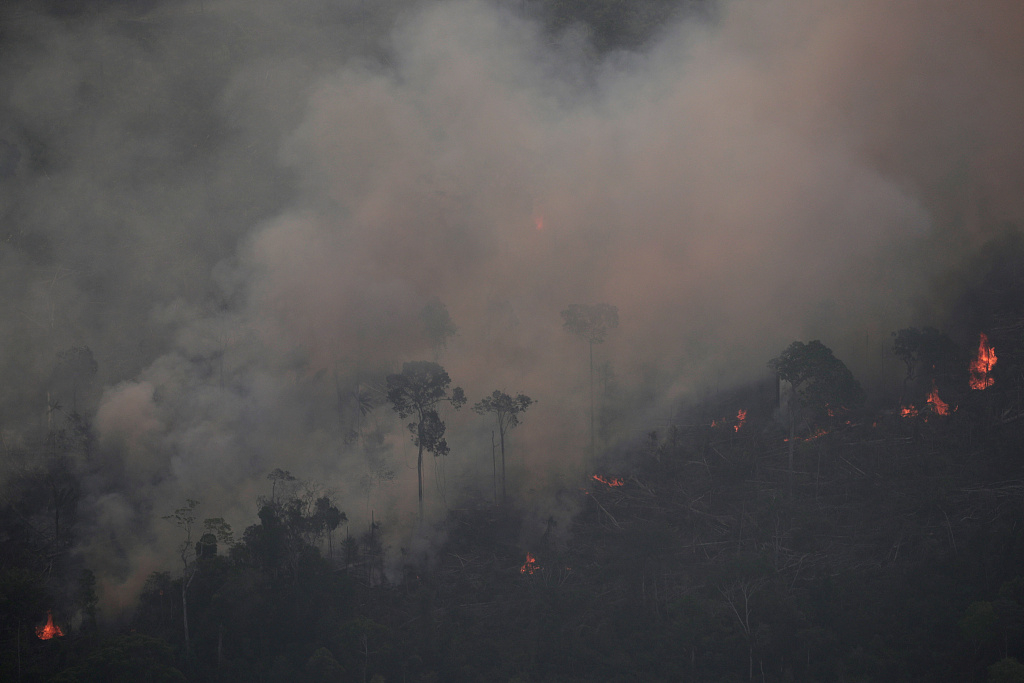
Raging wildfires have drawn the world's attention to the Amazon but they are just one of the dangers facing the world's largest rainforest, environmental experts across the region say.
The Amazon, covering 5.5 million square kilometers (2.1 million square miles) over nine countries, faces ever more serious threats from encroaching crop and livestock farming, mining, land occupations and illegal logging.
Crop and livestock farming
Deforestation for farming is one of the most serious threats to the rainforest, a problem common to all nine jurisdictions: Bolivia, Brazil, Colombia, Ecuador, French Guiana, Guyana, Peru, Suriname and Venezuela.
"The main cause of deforestation is the advancing agricultural boundary," said Jose Luis Capella, director of a forest plantation program in Peru, 13 percent of which is covered by the Amazon basin.
A case in point is Ecuador, where agricultural land increased by 23 percent between 2000 and 2017 – gouged from its share of the Amazon basin region.

A cattle with fire behind in the Amazon rainforest near Novo Progresso, Para state, Brazil, August 25, 2019. /VCG Photo
A practice common in Brazil, Peru, Ecuador and Bolivia is for farmers to set fires in the dry season to clear the undergrowth in deforested areas. However, this often leads to uncontrolled burning, which takes a greater toll on the rainforest.
Much to environmentalists' chagrin, Bolivia's government recently authorized farmers to burn 20 hectares (almost 50 acres) instead of the usual five hectares (12 acres) – which is believed to have contributed to thousands of wildfires that razed 1.2 million hectares of grassland and forest since May.
Mining
Illegal mining operations being carried out in most Amazon basin region countries causes significant damage, compounded by the use of chemicals such as mercury – particularly in gold mining – which has contaminated soil and streams.
The council of the Amerindian peoples of French Guiana declared after a recent meeting that "fire is not the only danger that threatens or destroys the Amazon. Extraction is largely responsible."
Some 29,000 hectares of rainforest have been destroyed due to both legal and illegal gold panning since 2003, according to the French territory's National Forestry Office.

The Moderate Resolution Imaging Spectroradiometer (MODIS) on NASA's Aqua satellite captured this image of several fires burning in the states of Rondonia, Amazonas, Para, and Mato Grosso, August 11, 2019. /VCG Photo
"Mining is much more serious than the fires," said Cecilia Gomez Miliani, head of the Venezuelan environmental NGO Vitalis. "All vegetation is cut, eliminated, and this poses problems of soil erosion, mercury contamination and population displacements."
Josse said the most worrying thing about mining is that it causes "permanent deforestation" by destroying several layers of soil, preventing regenerative growth.
Colombia has also mobilized its security forces to try to protect the Amazon basin after more than 138,000 hectares of rainforest disappeared in 2018, accounting for 70 percent of the country's total deforestation.
Illegal occupation, hardwood trafficking
Lack of a state presence in many remote and rural areas has also contributed to the growing practice of illegal land occupation, in which landless farmers settle on land hoping to get a legal title at some point.
"There is a tendency to confuse land occupation with (deforestation for) livestock," said Carolina Urrutia, of the Colombian NGO Parques Como Vamos.
"But there is a more complex phenomenon behind this process," namely the greed of politicians and businessmen to "own as much land as possible," and speculating on resale, she said.
"The absence of institutional control over the informal land market and the appropriation of public vacant lots make this phenomenon possible," says Rodrigo Botero of Colombia's Foundation for Conservation and Sustainable Development.

Smoke billows during a fire in an area of the Amazon rainforest near Porto Velho, Rondonia State, Brazil, Brazil, August 21, 2019. /VCG Photo
Under pressure from environmentalists, the Bolivian government has sought to make amends this week by announcing an "ecological pause" – prohibiting the sale of fire-ravaged land to crack down on speculators.
But that may be too little too late in a country that by its own admission has lost 1.2 million hectares of grassland and forest to fires since May.
The Amazon's massive timber resources long put the rainforest at risk from illegal logging concerns, particularly those trading in hardwoods like mahogany, now in danger of being wiped out from over-exploitation.
(Cover image via VCG.)
(If you want to contribute and have specific expertise, please contact us at nature@cgtn.com)

Copyright © 2018 CGTN. Beijing ICP prepared NO.16065310-3
Copyright © 2018 CGTN. Beijing ICP prepared NO.16065310-3